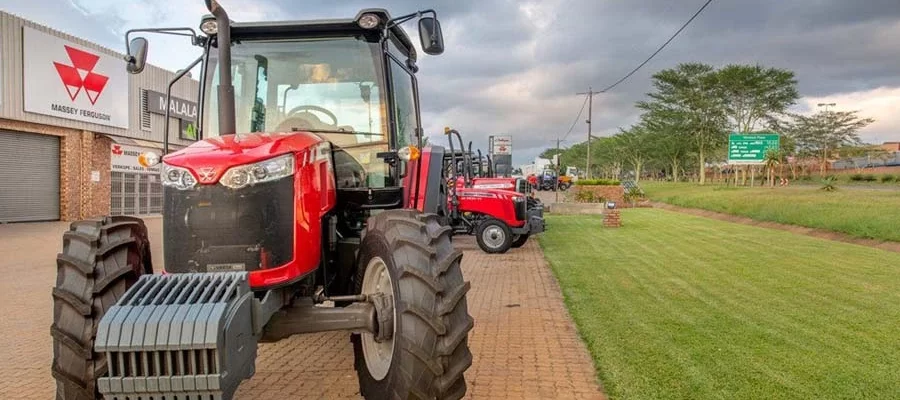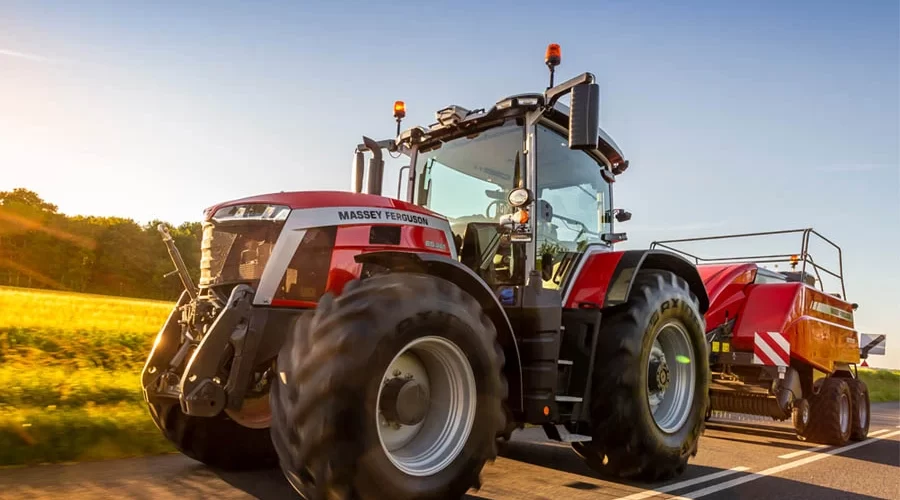
- February 25, 2025
- By: Massey Ferguson South Africa
- in: Agricultural Machinery, Farm Tractors

Farmers and tractor enthusiasts know that the tractor is an essential piece of equipment in agriculture. For long periods, the tractor was used solely in farms and fields, leaving roads to standard vehicles. However, this narrative is changing, with tractors being driven on public roads in South Africa and other countries. It has now become critical to know the legal requirements for road driving. This blog post explores the legalities of driving tractors on South African roads while considering factors such as tractor price, purchase, and import in South Africa.
The South African Roads Act 7 of 1996 has provisions that define the type of vehicles allowed on public roads. Tractors fall under Section 49 which regulates the transportation of abnormal loads. The law defines an abnormal load as any vehicle that does not follow the Act’s specifications for size, weight, or configuration. Consequently, driving a tractor on public roads in South Africa has specific requirements. Tractors need to follow the speed limits and road signs, have a roadworthy certificate from the South African Bureau of Standards, and need to have safety features like reflective tape.
Tractors used for farming are exempted from registration by the National Road Traffic Act of 1996. However, if you use the tractor for commercial purposes, such as transporting goods or remuneration for driving, it is subject to registration and a driving license requirement. Although there are few cases where licenses are issued for tractors, it is essential to note that driving a tractor without the necessary license is an offense.
Depending on the farming operation, tractors may require modifications to be operable on South African public roads. Firstly, Tractors need to have functional headlights, taillights, brake lights, indicators, hazard lights, and reverse lights if you drive on roads at night or in low visibility areas. Secondly, tractors require a slow-moving vehicle sign (SMV). The reflective triangle SMV sign ensures visibility to motorists and pedestrians from the rear. Lastly, tractors need to have a red flag or flashing light, which signifies a considerable load or slow-moving vehicle.
Driving a tractor on public roads can be hazardous to you and other motorists. When introducing a tractor to public road use, road users should follow established best practices and protocols to ensure everyone’s safety. For instance, tractors should be driven only by trained and experienced individuals, caused by the fact that driving a tractor is different from driving a regular car compounds safety concerns. Secondly, adhering to safety protocols such as wearing reflective clothing and helmets assures maximum visibility. Lastly, refrain from making sudden movements, such as backing into the road or stopping without signaling and be aware of other vehicles.
We conclude by emphasizing the importance of following the legal framework established for driving tractors on South African roads. While allowing tractors on the road has created opportunities for agricultural transportation, it is vital to observe the legal requirements to ensure safety for both the tractor operator and other road users. Additionally, when making tractor purchases, ensure that the seller provides the necessary documentation, including a roadworthy certificate and registration documents (if required), and always buy from reputable sellers to avoid fraud. For the safety of all road users, each party should follow established protocols to make road travel an enjoyable experience.

Post a Comment